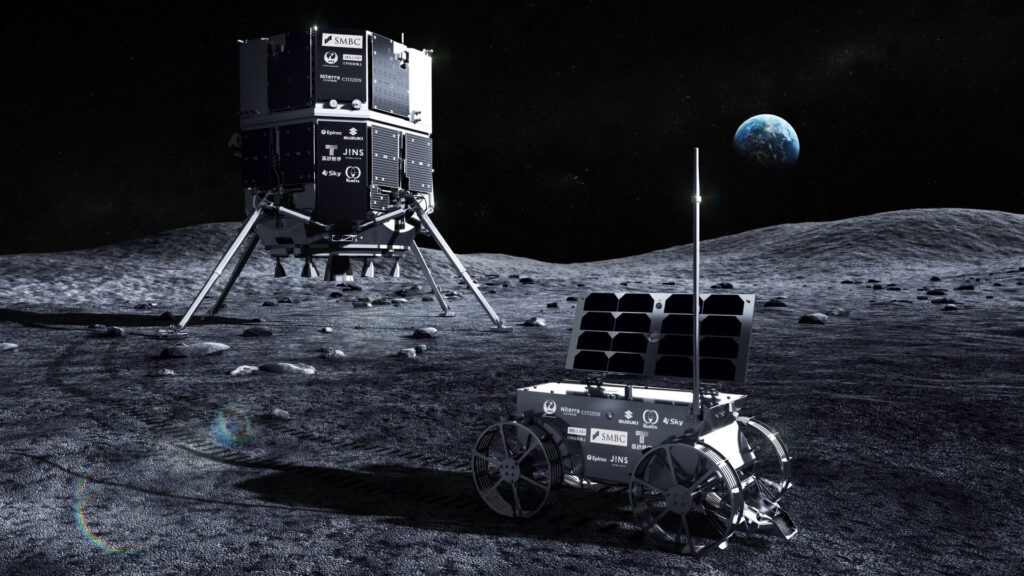
In a landmark collaboration, the European Space Agency (ESA) is lending its support to a Moon mission that will carry the first European-built lunar rover. The mission, led by Japanese lunar exploration company ispace, is set to attempt a landing on the Moon no earlier than June 5, 2025. This mission, named RESILIENCE, is part of ispace’s ambitious lunar exploration program and marks a significant milestone in international space exploration efforts.
The RESILIENCE spacecraft, which launched aboard a SpaceX Falcon 9 rocket from Cape Canaveral on January 15, 2025, is poised to land on the Moon’s Mare Frigoris. This mission represents the latest step in ispace’s “SMBC x HAKUTO-R Venture Moon” series and is operated from the company’s Mission Control Center in Tokyo. The team there is responsible for monitoring the spacecraft’s health and sending commands to its systems as it orbits the Moon.
ESA’s Crucial Role in Communication
The European Space Agency is playing a pivotal role by providing the communication link between the RESILIENCE spacecraft and ispace’s mission control. ESA’s global network of satellite communication antennas, managed from the European Space Operations Centre (ESOC) in Germany, ensures the transmission and reception of vital data across space.
Among the assets supporting this mission are ESA’s three 35-meter deep space antennas located in Spain, Argentina, and Australia, as well as a 15-meter antenna in French Guiana. Additionally, the commercial Goonhilly Earth Station Ltd in the UK is contributing to the mission via the extended Estrack network.
The Estrack stations supported RESILIENCE on launch day and throughout its months-long journey out into deep space and back again on a low-energy lunar transfer orbit.
Unveiling the First European Moon Rover
Once the RESILIENCE spacecraft lands, it will spend approximately two weeks conducting experiments for its commercial and institutional partners. During this phase, ESA and Goonhilly antennas will continue to facilitate communication, transmitting commands and receiving scientific data from the lander.
A highlight of this mission is the deployment of TENACIOUS, the first European-built lunar rover. This lightweight micro rover was designed, manufactured, and assembled by ispace EUROPE S.A., a Luxembourg-based subsidiary of ispace, with co-funding from LuxIMPULSE, the Luxembourg National Space Programme.
ispace Europe operates a lunar test yard, a clean room, and a control center in Luxembourg, which will be used to manage the rover’s activities on the lunar surface. In 2020, NASA awarded ispace Europe a contract to collect lunar regolith samples as part of the Artemis program, and the rover’s operations will contribute to this effort.
Communication and Future Implications
Commands to the TENACIOUS rover will be relayed from ispace’s control center in Luxembourg to ESOC in Germany, and then transmitted through ESA’s antennas to the Moon. The lander will receive these commands and forward them to the rover, while data, including images from the rover’s cameras, will make the return journey to Earth through the same communication chain.
This mission not only highlights the collaborative spirit between international space agencies and commercial entities but also sets the stage for future lunar exploration endeavors. By deploying the first European rover on the Moon, ESA and its partners are paving the way for more advanced scientific research and potential human settlements on the lunar surface.
“This mission represents a significant step forward in our understanding of the Moon and our ability to conduct scientific research on its surface,” said an ESA spokesperson.
As the world watches this historic mission unfold, the successful landing and operation of the TENACIOUS rover could open new doors for European space exploration and strengthen international partnerships in the pursuit of knowledge beyond our planet.

